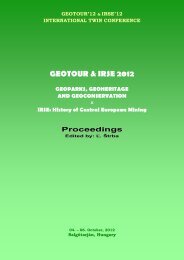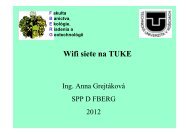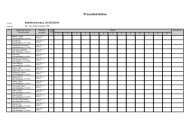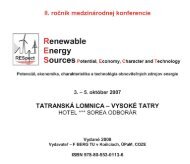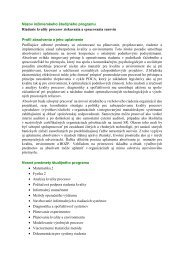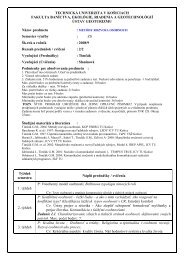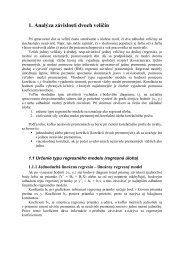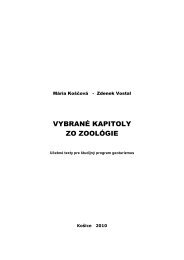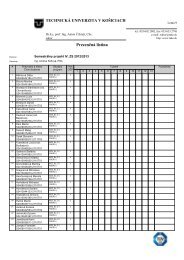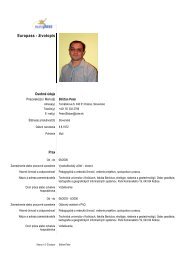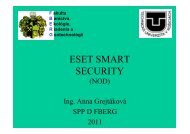GEOTOUR & IRSE 2012.pdf - Fakulta BERG - TUKE
GEOTOUR & IRSE 2012.pdf - Fakulta BERG - TUKE
GEOTOUR & IRSE 2012.pdf - Fakulta BERG - TUKE
Create successful ePaper yourself
Turn your PDF publications into a flip-book with our unique Google optimized e-Paper software.
Salgótarján, 04. – 06. October 2012<br />
- The economical situation of the population (ESP)<br />
- Workplace-creating investments (WCI)<br />
- Enterprises (E)<br />
Of course, one of the most important index-group contains the characteristics of the<br />
economical situation. The different size of the settlements has an effect on the data, so it is<br />
important to create dimensions and the unified metric.<br />
In the construction of composite indicators the normalisation is very important. Indicators<br />
should be normalised to render them comparable. Attention need to be paid to extreme values<br />
as they may influence subsequent steps in the process of building a composite indicator.<br />
Skewed data should also be identified and accounted for (OECD Handbook, 2008.).<br />
Different normalisation methods will produce different results for the composite indicator<br />
(Ranking; Standardisation; Min-Max; Indicators above or below the mean etc.). The authors<br />
demonstrate the theoretical background of the “ Indicators above or below the mean”<br />
normalisation type.<br />
This transformation considers the indicators which are above and below an arbitrarily defined<br />
threshold, p, around the mean:<br />
1 if w>(1+p)<br />
{<br />
I t qc= 0 if (1-p) w (1+p) where w =<br />
-1 if w < (1-p)<br />
x<br />
x<br />
t<br />
qc<br />
t 0<br />
qc c<br />
The threshold p builds a neutral region around the mean, where the transformed indicator is<br />
zero. This reduces the sharp discontinuity, from -1 to +1, which exists across the mean value<br />
to two minor discontinuities, from -1 to 0 and from 0 to +1, across the thresholds. A larger<br />
number of thresholds could be created at different distances from the mean value, which<br />
might overlap with the categorical scales. An indicator that moved from significantly below<br />
the mean to significantly above the threshold in the consecutive year would have a positive<br />
effect on the composite (OECD Handbook, 2008.).<br />
SUMMARY<br />
The composite indicator should ideally measure multidimensional concepts which cannot be<br />
captured by a single indicator, e.g. competitiveness, industrialisation, sustainability, single<br />
market integration, knowledge-based society, etc (OECD Handbook, 2008.).<br />
The factor of the economical and social underprivileged areas (ESUA) was created by<br />
summarizing different indexes ordered into five main groups (Siskáné Szilasi, B. 2010).<br />
ESUA = Σ (NF + SF + BEF + CF + EF),<br />
where the NF is the natural factor, the SF is the social factor, the BEF is the built<br />
environmental factor, the CF is the cultural factor, the EF is the economical factor.<br />
In the future we plan to make an empirical study and we will continue the analyses of<br />
statistical data. (Imputation of missing data, Multivariate analysis, Normalisation, Weighting<br />
and aggregation, Robustness and sensitivity, Presentation and visualisation). According to our<br />
results the examined sample area has good possibilities to develop geotourism.<br />
86



